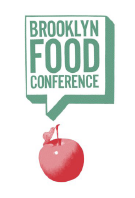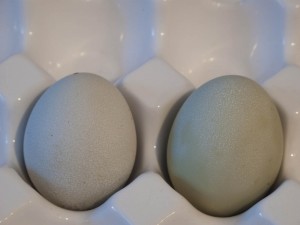
Growing Power in an Urban Food Desert
by Roger Bybee
Will Allen is bringing farming and fresh foods back into city neighborhoods.
Will Allen shows some of the 10,000 fish growing in one of Growing Power’s four-foot-deep, 10,000-gallon aquaponics tanks. Waste from the fish feeds greens and tomatoes. The plants purify the water for the fish. The fish eventually go to market.
At the northern outskirts of Milwaukee, in a neighborhood of boxy post-WWII homes near the sprawling Park Lawn housing project, stand 14 greenhouses arrayed on two acres of land. This is Growing Power, the only land within the Milwaukee city limits zoned as farmland.
Founded by MacArthur Foundation “genius” fellow Will Allen, Growing Power is an active farm producing tons of food each year, a food distribution hub, and a training center. It’s also the home base for an expanding network of similar community food centers, including a Chicago branch run by Allen’s daughter, Erika. Growing Power is in what Allen calls a “food desert,” a part of the city devoid of full-service grocery stores but lined with fast-food joints, liquor stores, and convenience stores selling mostly soda and sweets. Growing Power is an oasis in that desert.
Allen’s parents were sharecroppers in South Carolina until they bought the small farm in Rockville, Maryland, where Allen grew up. “My parents were the biggest influence on my life,” says Allen. “We didn’t have a TV and we relied on a wood stove, but we were known as the ‘food family’ because we had so much food. We could feed 30 people for supper.”
He was a high school All-American in basketball, played for the University of Miami, and played pro ball with the American Basketball Association in Europe. At a towering 6 feet 7 inches, with Schwarzenegger-size biceps, and chiseled features, Allen looks ready to step back onto the court.
After stints as an executive for Kentucky Fried Chicken and Proctor and Gamble, he returned to his family roots. “I never wanted a career in the corporate world, but I wanted to be able to afford a good education for my kids,” he explains. “At the right time, the kids were in college and the opportunity to buy the farm and start Growing Power came up,” Allen remembers. “From a spiritual standpoint, it worked out right; it was a natural thing, something I wanted to do.”
Growing Food
Since 1993, Allen has focused on developing Growing Power’s urban agriculture project, which grows vegetables and fruit in its greenhouses, raises goats, ducks, bees, turkeys, and—in an aquaponics system designed by Allen—tilapia and Great Lakes Perch—altogether, 159 varieties of food.
Growing Power also has a 40-acre rural farm in Merton, 45 minutes outside Milwaukee, with five acres devoted to intensive vegetable growing and the balance used for sustainably grown hays, grasses, and legumes which provide food for the urban farm’s livestock.
Allen has taken the knowledge he gained growing up on the farm and supplemented it with the latest in sustainable techniques and his own experimentation.
Growing Power composts more than 6 million pounds of food waste a year, including the farm’s own waste, material from local food distributors, spent grain from a local brewery, and the grounds from a local coffee shop. Allen counts as part of his livestock the red wiggler worms that turn that waste into “Milwaukee Black Gold” worm castings.
Allen seems to take a particular delight in thrusting his steam-shovel-sized hands into a rich mixture of soil and worms in Growing Power’s greenhouses. “You can’t grow anything without good soil,” he preaches to a group touring the project.
Allen designed an aquaponics system, built for just $3,000, a fraction of the $50,000 cost of a commercially-built system. In addition to tilapia, a common fish in aquaculture, Allen also grows yellow perch, a fish once a staple of the Milwaukee diet. Pollution and overfishing killed the Lake Michigan perch fishery; Growing Power will soon make this local favorite available again. The fish are raised in 10,000-gallon tanks where 10,000 fingerlings grow to market size in as little as nine months.
But the fish are only one product of Allen’s aquaponics system. The water from the fish tanks flows into a gravel bed, where the waste breaks down to produce nitrogen in a form plants can use. The gravel bed supports a crop of watercress, which further filters the water. The nutrient-rich water is then pumped to overhead beds to feed crops of tomatoes and salad greens.
The plants extract the nutrients while the worms in the soil consume bacteria from the water, which emerges virtually pristine and flows back into the fish tanks. This vertical growing system multiplies the productivity of the farm’s limited space.
“Growing Power is probably the leading urban agricultural project in the United States,” says Jerry Kaufman, a professor emeritus in urban and regional planning at the University of Wisconsin–Madison. “Growing Power is not just talking about what needs to be changed, it’s accomplishing it.”
Growing Community
Simply growing that much food in a small space is a remarkable achievement. But it’s only the start of Growing Power’s mission. “Low-quality food is resulting in diabetes, obesity, and sickness from processed food,” Allen maintains. “Poor people are not educated about nutrition and don’t have access to stores that sell nutritious food, and they wind up with diabetes and heart disease.”
Growing healthy food is part of a larger transformational project that will create a more just society, as Allen sees it.
He also works on the Growing Food and Justice Initiative, a national network of about 500 people that fights what he calls “food racism,” the structural denial of wholesome food to poor African-American and Latino neighborhoods. “One of our four strategic goals is to dismantle racism in the food system. Just as there is redlining in lending, there is redlining by grocery stores, denying access to people of color by staying out of minority communities.”
The store at Growing Power’s Milwaukee farm is the only place for miles around that carries fresh produce, free-range eggs, grass-fed beef, and homegrown honey. Even in winter, customers find the handmade shelves and aging coolers stocked with fresh-picked salad greens.
Growing Power co-director Karen Parker, who has worked alongside Allen since the project started, says, “It’s a wonderful thing to change people’s lives through changing what they’re eating.” Parker believes her parents would have lived much longer with a healthier diet. She takes a deep pride in providing fresh, healthy food. “Last summer during the salmonella problem with tomatoes, I was able to tell customers, ‘You don’t have to worry. These tomatoes were grown right here.’ I found myself selling out of tomatoes.”
Growing Power supplements its own products with food from the Rainbow Farming Cooperative, which Allen started at the same time as Growing Power. The cooperative is made up of about 300 family farms in Wisconsin, Michigan, Northern Illinois, and the South. The southern farmers, who are primarily African-Americans, make it possible to offer fresh fruits and vegetables year-round. The produce goes into Growing Power’s popular Farm-to-City Market Baskets. A week’s worth of 12-15 varieties of produce costs $16. A $9 “Junior/Senior” basket, with smaller quantities of the same produce, is also available.
Each Friday, Growing Power delivers 275–350 Market Baskets of food to more than 20 agencies, community centers, and other sites around Milwaukee for distribution. Bernita Samson, a retiree in her 60s with eight grandchildren, picked up the Market Basket habit from her brother and late mother. “I get the biggest kick out of what I get in my bag each week,” she says. “At Sunday dinners my grandkids say, ‘Ooh, Grandma this is good!’ They really like what they call the ‘smashed potatoes.’”
For Samson, Growing Power provides not only healthy food but also a vital source of community. “Sometimes it’s so crowded at the [Growing Power] store on Saturdays you can’t even get up in there. Going there gives you a chance to meet people and talk.”
Growing Power is also a source of 35 good-paying jobs in an area of high unemployment. The staff of Growing Power is highly diverse—a mixture of young and old, African-American, white, Asian, Native American, and Latino, with remarkably varied work histories. All live nearby. Co-director Karen Parker, a high-energy African-American woman who radiates warmth whether greeting her 6-year-old granddaughter or welcoming a volunteer, notes that some staff are former professionals who left the high-stress environments of corporations, social work, and other fields. At Growing Power they find a new kind of fulfillment in the blend of hard physical labor and thoughtful planning based on scientific research. Others are former blue-collar workers, farmers, or recent college graduates. All find satisfaction in transforming how Americans eat.
Loretta Mays, 21, who works in the marketing department, was only 14 when Karen Parker recruited her into the Growing Power Youth Corps program. “It’s a good learning experience, and you learn the importance of good food. I never understood how food was grown. Now, its like, ‘Wow, I can grow my own garden.’”
Growing Youth
Four middle and high schools bring students to Growing Power to learn about vermiculture (raising worms) and growing crops, and to eat the food they’ve grown. The impact can change the kids’ lives.
Anthony Jackson started working at Growing Power when he was 14, with half of his earnings going to school clothes and half to a bank account that his church set up. At age 20, he went away to college.
“I learned a good work ethic—that things don’t come easy,” he says of his time at Growing Power. “You’d see Will doing the same things he asked you to do.”
The experience helped to shape the direction of his college education. “Early on, the importance of the healthy food really didn’t hit home,” he says. “But when I got a degree in natural resources, it came to mean a lot more.” Jackson, now 29, still maintains a strong connection, shopping at Growing Power and attending workshops.
Working with the young people in the community is central to Growing Power’s work and its hopes for the future. It provides year-round gardening activities for kids aged 10-18 at its Milwaukee headquarters and offers summertime farming experience on its parcel in Merton, adjacent to the Boys and Girls Club’s Camp Mason. Growing Power recently leased five acres at Milwaukee’s Maple Tree School and built a community garden in partnership with the school. Growing Power also assists school gardens at the Urban Day School and the University School of Milwaukee.
“For kids to make their own soil, grow their own food, and then get to eat it, that’s a very powerful experience,” Will Allen says. “There’s nothing like hands-on experience for kids who are bored with school. They get excited about what they’re learning and then take it back to their classes.”
Growing Power on the Road
Success in Milwaukee isn’t enough for Allen. Growing Power seeks nothing less than, in the words of the organization’s mission statement, “creating a just world, one food-secure community at a time.” To show that the techniques pioneered in Milwaukee can work anywhere, Growing Power is helping set up five projects in impoverished areas across the United States, including training centers in Forest City, Arkansas; Lancaster, Massachusetts; and Shelby and Mound Bayou, Mississippi.
The largest application of Growing Power’s model is in Chicago, where Erika Allen, Will’s daughter, is carrying on the family tradition. The Chicago project started in the Cabrini-Green public housing project, where Growing Power’s techniques helped the Fourth Presbyterian Church transform a basketball court into a flourishing community garden fueled by Will Allen’s beloved red worms. Growing Power also has a half-acre farm in Grant Park, in the heart of downtown Chicago. The Grant Park project focuses on job training for young people, involving them in all aspects of growing the 150 varieties of heirloom vegetables, herbs, and edible flowers the farm sells in Chicago farmers markets and through the Farm-to-City Market Basket program, like the one pioneered in Milwaukee.
After Erika Allen, 39, earned a degree in art therapy, she eventually settled back into her family’s farming tradition, which she believes extends back some 400 years. “I was very much influenced by that tradition, and I got really inspired,” she says. “It was a way of learning to honor my ancestors.”
But she has not turned her back on her artistic impulses. “With my love of art, the Grant Park project is an opportunity to integrate the two—with the colors, design, textures of the plants.”
The most important element, she says, is “to see it inspiring other people. When people in communities like Detroit are really suffering, we can show that we did it in Chicago, with women and a bunch of teenagers.”
The work of involving people in producing and distributing healthy food in Chicago’s food deserts is part of equalizing power in American society, Erika Allen says. “Our work is infused with social justice, fighting racism and oppression.”
The same hunger for justice drives Will Allen’s vision of changing the food system. “How do you take our model and our vision around the world?” Allen asks. “It takes some foot-soldiers who become change agents. We’ve trained an awful lot of people.”
Every year, 10,000 people tour the Growing Power farms. About 3,000 youths and adults from around the world participate in formal training sessions, learning how to build aquaponics systems, construct “hoop houses” (low-cost greenhouses covered by clear plastic), use compost to heat greenhouses, use worms to turn waste into rich fertilizer, and all the other low-tech, high-yield techniques that Growing Power has developed or adapted.
Will Allen takes obvious pleasure in seeing people fed healthy food in great quantities, just as his parents did on their small farm. But he says he derives his deepest satisfaction from a sense of changing the lives of other people harmed by the present food system and the inequities it reflects. “I don’t do things to satisfy myself,” he states firmly. “This is what I’m doing for a bigger pool of people out there.”
Roger Bybee wrote this article as part of Food for Everyone, the Spring 2009 issue of YES! Magazine. Roger is a Milwaukee-based writer and has been a progressive activist for 40 years. His work has appeared in Z, Dollars & Sense, Multinational Monitor, The Progressive, and elsewhere. His website is www.zcommunications.org-/zspace/rogerdbybee.
































